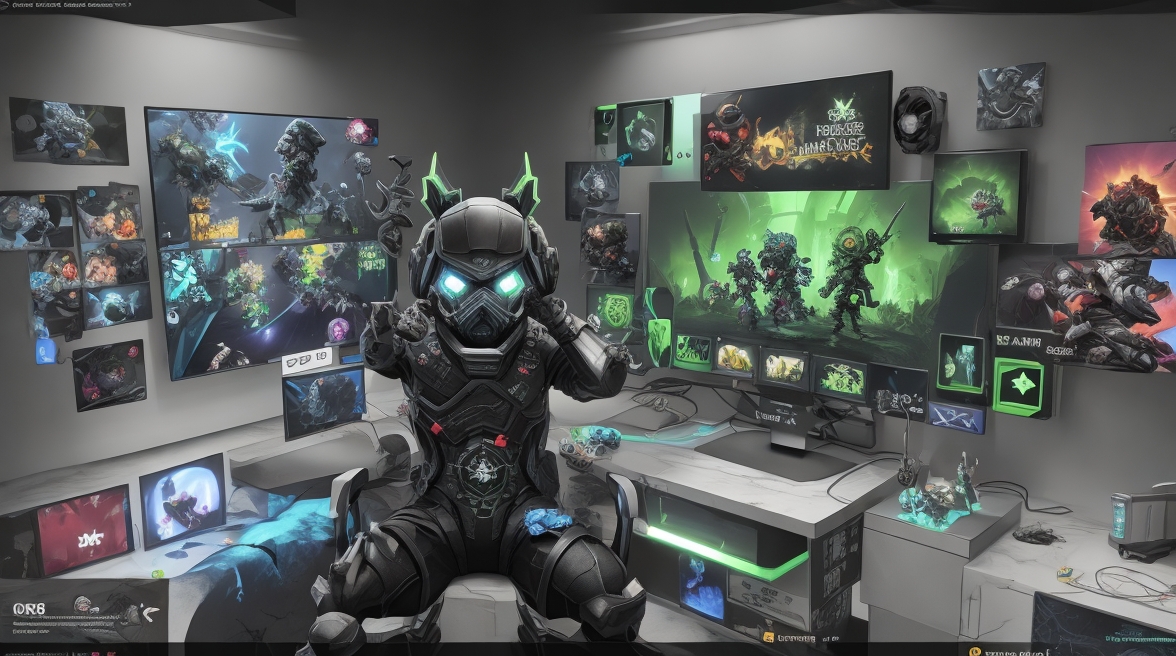How to Manage Toxicity in Communities of Online Gamers
Overview of Toxicity in Online Gaming Communities:
- The thrill of playing an online game can occasionally be eclipsed by negative behavior in the community. There are many different ways that something might be toxic, from poor behavior that lowers player morale to harassment and trolling.
- Sustaining a healthy gaming environment requires knowing how to control and reduce toxicity. This manual examines practical tactics and fixes for managing negativity in online gaming groups.
What Does Online Gaming Toxicity Mean?
Definition and Illustrations
In the context of online gaming, toxic behavior is defined as negative, disruptive, or damaging player behavior. For example, consider the following:
- Personal insults, threats, or unwanted advances are examples of harassment.
- Trolling: Purposefully irritating or causing distress to other gamers.
- Griefing: Deliberately undermining the enjoyment of other players.
- Flaming: Derogatory, hostile remarks directed at fellow gamers.
Why Is Toxicity Present?
Social and Psychological Aspects
Effectively managing toxicity can be aided by knowing why it happens. Essential elements consist of:
- Online anonymity can encourage people to act in ways they otherwise wouldn’t.
- Competitive Pressure: Playing games with high stakes might make you more stressed and cause bad relationships.
- Cultural norms: Some groups may accept or encourage toxic behavior.
- Personal Issues: People may reflect their anxieties or disappointments onto others.
The Effects of Toxicity on Participants and Societies
Adverse conduct can have far-reaching effects:
- Player Well-Being: Stress, anxiety, or a drop in self-esteem are possible outcomes for those who fall prey to toxicity.
- Community Health: The presence of toxicity might deter new participants and weaken the bonds within the community.
- Enjoyment of the Game: Extended toxicity may reduce players’ total enjoyment and involvement.
Techniques for Controlling Toxicity
1. Documenting and obstructing
The majority of games have options for banning and reporting abusive users. Making use of these functions can assist with the following:
- Report: Report inappropriate behavior using the in-game reporting system. Provide concise, thorough reports to improve the chance of action being taken.
- Block: You can stop toxic players from interacting with you or participating in your games by blocking them.
2. Community Management and Moderation
Toxic effects can be reduced by community management and effective moderation:
- Active Moderation: Strictly apply and enforce community rules. Provide moderators with the authority to quickly reprimand infringers.
- Establish unambiguous and easily understandable norms for the community that specify appropriate conduct and the penalties for noncompliance.
- Establish support systems that enable players to report problems or request assistance anonymously.
3. Encouraging Good Conduct
- It is imperative to incentivize healthy behavior.
- Positive reinforcement involves praising and rewarding athletes who behave well and have good sportsmanship.
- Exemplifying: Set a good example by encouraging polite discourse and helpful criticism.
- Community Events: Plan activities that encourage cooperation and create a feeling of solidarity among participants.
Teaching Participants
Programs for Education and Awareness
- It can be beneficial to instruct gamers about the effects of toxicity and how to manage it.
- In-Game Tutorials: Include instructional sections to teach players about proper conduct and ways to report issues.
- Workshops & Seminars: Organise in-person or virtual gatherings to talk about the significance of preserving a positive gaming environment.
- Tools and Assistance: Grant entry to tools that guide handling and overcoming harmful conduct.
Managing Toxicology in the Video Game Industry
Creating with Optimal User Experience in Mind
A key influence on how the gaming experience is shaped is the work of game developers:
- Design considerations: Develop game features that promote cooperation and lessen the likelihood of harmful behavior.
- Implementing mechanisms that enable players to offer feedback on their experiences can help identify and resolve problems early on.
- Engage the community to learn about their concerns and work together to improve the gaming environment.
Case Studies
Instances of Effective Interventions
1.Case Study 1: Overwatch: Toxic behaviour was less common after Blizzard Entertainment implemented a robust reporting mechanism and frequent changes to community norms.
- Case Study 2: Riot Games implemented a player behavior system in League of Legends to promote positive behavior and discourage toxicity. The system consists of a combination of penalties and rewards.
In summary
To handle toxicity in online gaming communities, a multifaceted strategy, including reporting channels, efficient moderation, and community involvement, is needed. To build a more pleasant and courteous gaming environment, players, moderators, and developers can collaborate to identify the causes of toxic behavior and implement countermeasures. Tackling toxicity enhances player experiences on an individual basis as well as the general well-being and longevity of gaming communities.
Urge to Take Action
to actively engage in community moderation, report harmful behavior, promote polite interactions, and enhance a healthy gaming environment.
Through collaboration, we can establish a gaming community that fosters an environment where individuals may freely engage in their preferred games without being hindered by toxic behavior.












Leave a Reply